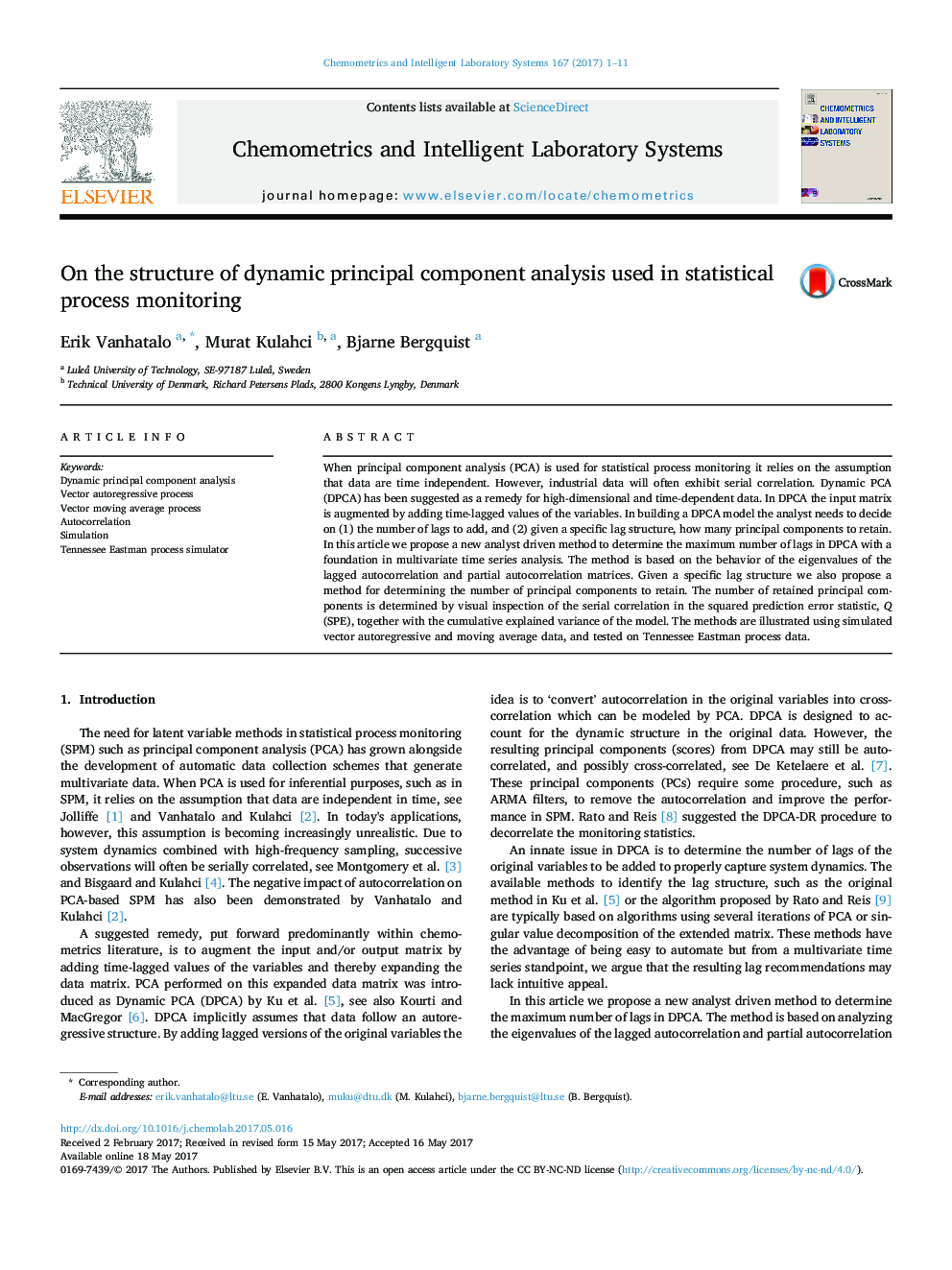| کد مقاله | کد نشریه | سال انتشار | مقاله انگلیسی | نسخه تمام متن |
|---|---|---|---|---|
| 5132164 | 1491512 | 2017 | 11 صفحه PDF | دانلود رایگان |

- A new method to determine the number of lags in Dynamic PCA (DPCA) is proposed.
- The proposed lag selection method applies multivariate time series theory.
- A visual method to choose the number of PCs to retain is also proposed.
- Simulated VAR(1) and VMA(1) data are used for tests and illustrations.
- The methods perform well when tested on Tennessee Eastman Process data.
When principal component analysis (PCA) is used for statistical process monitoring it relies on the assumption that data are time independent. However, industrial data will often exhibit serial correlation. Dynamic PCA (DPCA) has been suggested as a remedy for high-dimensional and time-dependent data. In DPCA the input matrix is augmented by adding time-lagged values of the variables. In building a DPCA model the analyst needs to decide on (1) the number of lags to add, and (2) given a specific lag structure, how many principal components to retain. In this article we propose a new analyst driven method to determine the maximum number of lags in DPCA with a foundation in multivariate time series analysis. The method is based on the behavior of the eigenvalues of the lagged autocorrelation and partial autocorrelation matrices. Given a specific lag structure we also propose a method for determining the number of principal components to retain. The number of retained principal components is determined by visual inspection of the serial correlation in the squared prediction error statistic, Q (SPE), together with the cumulative explained variance of the model. The methods are illustrated using simulated vector autoregressive and moving average data, and tested on Tennessee Eastman process data.
Journal: Chemometrics and Intelligent Laboratory Systems - Volume 167, 15 August 2017, Pages 1-11